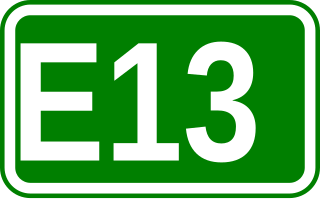
E-type asteroids are asteroids thought to have enstatite (MgSiO3) achondrite surfaces. They form a large proportion of asteroids inward of the asteroid belt known as Hungaria asteroids, but rapidly become very rare as the asteroid belt proper is entered. There are, however, some that are quite far from the inner edge of the asteroid belt, such as 64 Angelina. They are thought to have originated from the highly reduced mantle of a differentiated asteroid.

2867 Šteins is an irregular, diamond-shaped background asteroid from the inner regions of the asteroid belt, approximately 5 kilometers in diameter. It was discovered on 4 November 1969 by Soviet astronomer Nikolai Chernykh at the Crimean Astrophysical Observatory in Nauchnij on the Crimean peninsula. In September 2008, ESA's spacecraft Rosetta flew by Šteins, making it one of few minor planets ever visited by a spacecraft. The bright E-type asteroid features 23 named craters and has a rotation period of 6.05 hours. It was named for Soviet Latvian astronomer Kārlis Šteins.

European route E13 is part of the International E-road network. It runs most of the length of the M1 motorway in the United Kingdom, from South Yorkshire to London. The E13 follows the route Doncaster – Sheffield – Nottingham – Leicester – Northampton – Luton – London, and is 277 km (172 mi) long.

Satellite or SAT chromosomes are chromosomes that contain secondary constructs that serve as identification. They are observed in Acrocentric chromosomes. In addition to the centromere, one or more secondary constrictions can be observed in some chromosomes at metaphase. These chromosomes are called satellite chromosomes. In humans it is usually associated with the short arm of an acrocentric chromosome, such as in the chromosomes 13, 14, 15, 21, & 22. The Y chromosome can also contain satellites, although these are thought to be translocations from autosomes. The secondary constriction always keeps its position, so it can be used as markers to identify specific chromosomes.

3103 Eger is an Apollo and Mars-crosser asteroid that was discovered in 1982, by Miklós Lovas. It was named after the city of Eger, Hungary. It has an albedo of 0.64, making it a highly reflective asteroid.

NGC 2867 is an elliptical Type II planetary nebula in the southern constellation of Carina, just over a degree to the NNW of the star Iota Carinae. It was discovered by John Herschel on April 1, 1834. Herschel initially thought he might have found a new planet, but on the following night he checked again and discovered it had not moved. The nebula is located at a distance of 7,270 light-years from the Sun.

Si Ma Cai is a rural district of Lào Cai province in the Northeast region of Vietnam. As of 2003, the district had a population of 25,554. The district covers an area of 241 km2. The district capital lies at Si Ma Cai.

Čitluk is a village in Serbia. It is situated in the Mali Zvornik municipality, in the Mačva District of Central Serbia. The population of the village is 238, all of which are Serbs.
Kotki is a village in the administrative district of Gmina Barciany, within Kętrzyn County, Warmian-Masurian Voivodeship, in northern Poland, close to the border with the Kaliningrad Oblast of Russia.

Taojin Station, formerly Garden Hotel Station (花园酒店站). during planning, is a station on Line 5 of the Guangzhou Metro It is located under the junction of East Huanshi Road (环市东路) and Taojin Road (淘金路) in the Yuexiu District, near the Garden and Baiyun Hotels. It opened on 28 December 2009.

Invasive lobular carcinoma (ILC) is breast cancer arising from the lobules of the mammary glands. It accounts for 5–10% of invasive breast cancer. Rare cases of this carcinoma have been diagnosed in men.
Jushatyria is an extinct genus of archosaur. Fossils have been found in the Koltaevo III Locality, district of Kumertau near the Ural Mountains in European Russia from the Bukobay Gorizont. The locality dates back to the Ladinian stage of the Middle Triassic. Additional material has been described from a locality on the banks of the Berdyanka River that was previously assigned to a rauisuchid-like archosaur. However, this material differed from the original specimens because it lacked slit-like antorbital openings accompanying the antorbital fossa. Nesbitt (2009) and Gower and Sennikov (2000) suggested that all material currently referred to Jushatyria most likely does not represent a single taxon. Thus, Jushatyria is known only from its holotype PIN 2867/5, an incomplete left maxilla. As the maxilla is damaged, many "rauisuchian" characters could not be verified. Jushatyria was reassigned as an indeterminate archosaur on the basis of the presence of an antorbital fossa on the lateral surface of the maxilla.
The Weskeag River is a short tidal river in Knox County, Maine. The Abenaki Indians called it Wessaweskeag, meaning "tidal creek" or "salt creek". From its source in South Thomaston, the river runs 1.2 miles (1.9 km) northeast and southeast to its confluence with Marsh Creek, then 4.2 miles (6.8 km) southeast through its estuary to the Muscle Ridge Channel of West Penobscot Bay. Its mouth is on the border between the towns of South Thomaston and Owls Head.

The Union Building is a building on the University of Texas at Austin campus, serving as a "college independent community center" or "living room" for students. Designed by Paul Cret, who also designed the Tower and Main Building, Goldsmith Hall and Texas Memorial Museum on the same campus, the Union was built in 1933 with funds provided by Texas Exes in a campaign led by Thomas Watt Gregory.

USS Westover (ID-2867) was a cargo ship of the United States Navy that served during World War I and was sunk during her maiden voyage.
Jin Qeshlaqi is a village in Garmeh-ye Jonubi Rural District, in the Central District of Meyaneh County, East Azerbaijan Province, Iran. At the 2006 census, its population was 44, in 8 families.

Kotenovtsi is a village in Berkovitsa Municipality, Montana Province, north-western Bulgaria.
Parlichevo is a village in Berkovitsa Municipality, Montana Province, north-western Bulgaria.
Melampagos was a town of ancient Aeolis. It is evidenced by epigraphic evidence dated to the 5th century BCE on decrees establishing boundaries between Melampagos and Heraclea.
SP77 46-44 is a red supergiant star found in the Large Magellanic Cloud in the constellation of Dorado. It is one of the largest stars discovered, with a radius over 1,200 solar radii. If placed in the Solar System, its photosphere would engulf the orbit of Jupiter.











